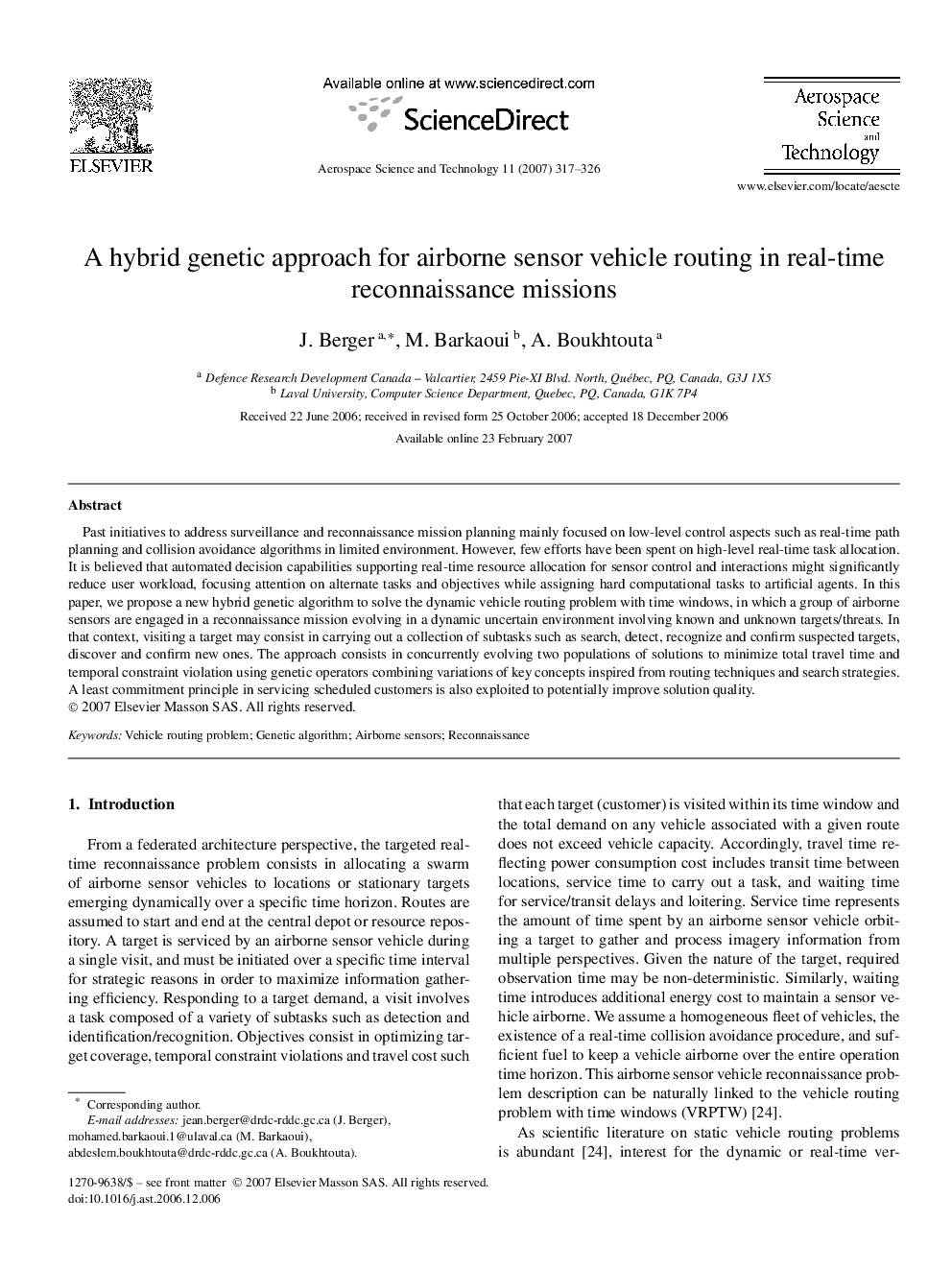| Article ID | Journal | Published Year | Pages | File Type |
|---|---|---|---|---|
| 1718928 | Aerospace Science and Technology | 2007 | 10 Pages |
Past initiatives to address surveillance and reconnaissance mission planning mainly focused on low-level control aspects such as real-time path planning and collision avoidance algorithms in limited environment. However, few efforts have been spent on high-level real-time task allocation. It is believed that automated decision capabilities supporting real-time resource allocation for sensor control and interactions might significantly reduce user workload, focusing attention on alternate tasks and objectives while assigning hard computational tasks to artificial agents. In this paper, we propose a new hybrid genetic algorithm to solve the dynamic vehicle routing problem with time windows, in which a group of airborne sensors are engaged in a reconnaissance mission evolving in a dynamic uncertain environment involving known and unknown targets/threats. In that context, visiting a target may consist in carrying out a collection of subtasks such as search, detect, recognize and confirm suspected targets, discover and confirm new ones. The approach consists in concurrently evolving two populations of solutions to minimize total travel time and temporal constraint violation using genetic operators combining variations of key concepts inspired from routing techniques and search strategies. A least commitment principle in servicing scheduled customers is also exploited to potentially improve solution quality.
